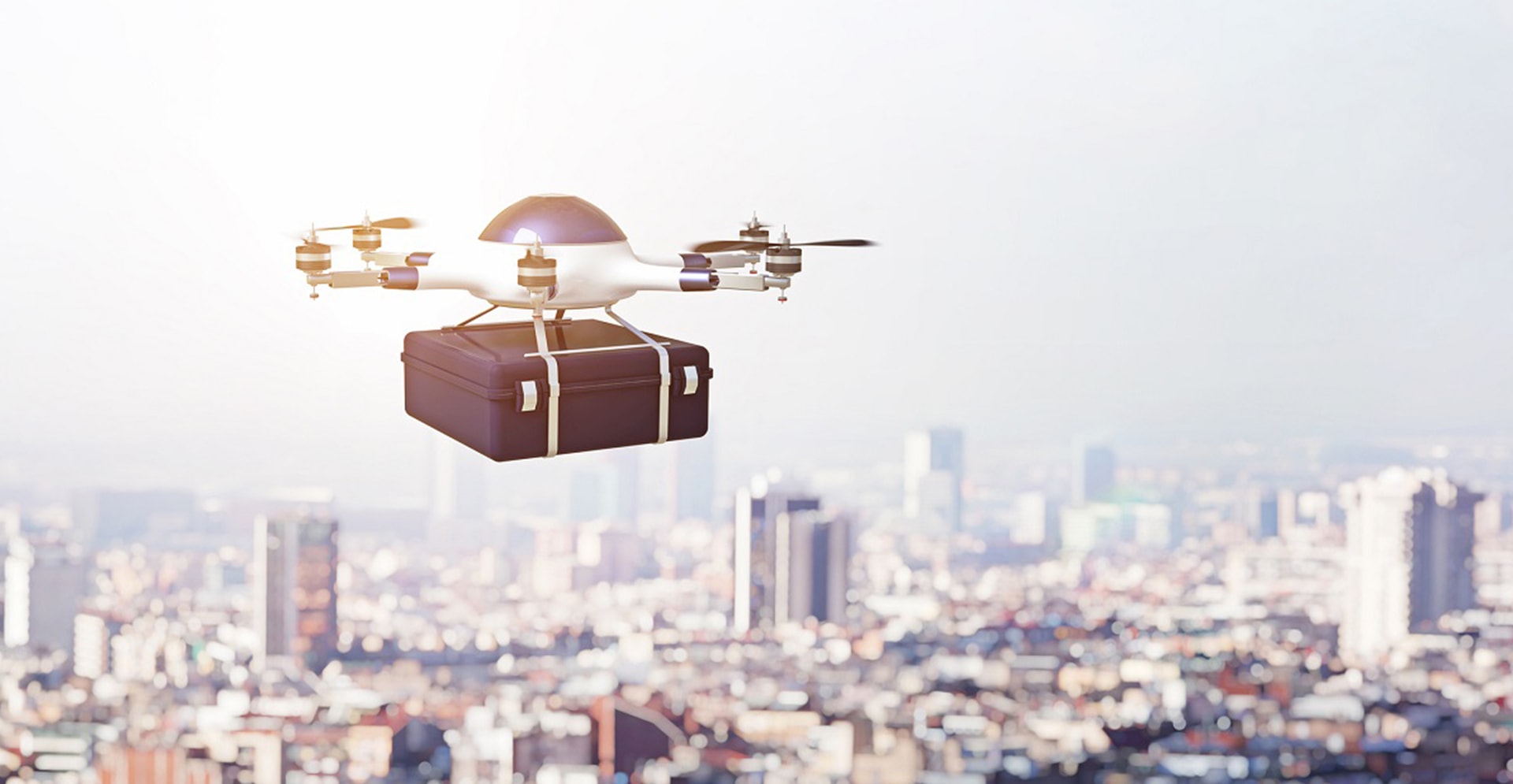Cities are growing, and urban populations are rising. With approximately 2.5 billion additional people expected to move to urban areas by 2050, what does this mean for the future of our cities? And how can we better facilitate the movement of people and goods in and around these cities, without increasing congestion, road accidents, air pollution, noise and climate change?
Smart mobility and implications for logistics in cities
Today, 55% of the world’s population live in urban areas, by 2050 this could increase to 68%, while global population is forecast to rise to 9.7 billion. At the same time, eCommerce is driving growth in domestic and international markets. In the UK, online shopping and eCommerce accounted for 18.2 per cent of all retail spending in July 2018, up considerably over past years. Consumers are spending more and want customised goods delivered preferably within the same day to suit their flexible lifestyles. According to McKinsey, the cost of global parcel delivery, excluding pickup, line-haul, and sorting, amounts to around EUR 70 billion, with China, Germany, and the United States accounting for more than 40 percent of the market.
This has implications for the logistics required to fulfil consumer needs.
New technological possibilities – particularly in the Connected and Autonomous Vehicles space - coupled with the digitalizing of the retail market has led to the emergence of new delivery methods, including ground last mile bots and drones. By 2030, the global market for delivery bots is expected to reach the 17 billion mark with food, groceries, and eCommerce firms largely expected to benefit from such solutions.
However, the speed of logistics has not yet caught up with decreased lead time, leaving consumers often frustrated and businesses busy with solving the corresponding challenges. With the additional negative impact from increased congestion on air quality and quality of life in cities this will force logistic carriers to do their part by finding more sustainable, less intrusive ways to make urban deliveries work for the cities they operate in.
What is last mile delivery and why is it a problem?
The movement of a product from the transportation hub to the end customer - the “last mile” of delivery - is the final step of this process. The last mile, which holds the key to consumer experience, is also both the most expensive and time-consuming part of the shipping process.
One contributing factor towards current levels of congestion in our cities are last-mile delivery vans. In the UK, the number of vans on the road increased by 82% between 1993 and 2016 and domestic emissions from vans has increased from 11% in 1990 to 16% in 2016. Anyone who has tracked a package online will be familiar with the statement “out for delivery” and clearly understand the corresponding problem: inefficiency. The final step of the process demands multiple stops with low drop sizes.
Delivery Bots Versus Drones - A Comparison
Once delivery drones become low-cost and omnipresent, they will enable shipments of needed goods beyond parcel deliveries and groceries. Companies are looking at this from two perspectives: home drone delivery and supply chain delivery. The former has been receiving immense public attention, predominately led by companies such as Amazon Prime Air, Flirtey and Zipline. The latter has the potential to smooth out the fulfilment process and increase efficiencies. Beyond parcel delivery, some of the most promising uses include delivery of medicines, pathology specimens such as vaccines and delivery to hard to reach areas. However, there are some big obstacles to overcome before pilot programmes can give way to mass roll out.
At present, laws around the world demand a person must always remain in line of sight of the drone; in addition, as of July 2018, the UK has implemented a new “Drone Code” with a ban on individuals flying drones above 400ft (120m) and within 0.6 miles (1km) of an airport or airfield. Although the safety considerations are laudable, regulation will need to evolve to allow the development of a beneficial drone ecosystem alongside technological development paired with appropriate use cases. Furthermore, infrastructure like communications networks and Intelligent Transport Systems (ITS) will need to be built to sustain this use case.
While ground delivery bots and drones have seemingly similar use-cases at first glance, delivery bots - with their higher payload capacity and a higher social appeal (for example, reduced noise) - are outpacing drones in commercial acceptance. With aerial deliveries still in their infancy, ground last mile bots are likely to edge ahead in the near future.
Ground last mile bots
The emergence of ground last mile bots seems to be part of a larger trend of retail automation involving artificial intelligence (AI) and robotics. Companies such as Amazon, DHL, and UPS, as well as logistics and supply chain management organizations, have been experimenting with robots and drones to deliver parcels. One of the latest start-ups to join the last mile delivery race is a San Francisco start-up called Marble. The company has developed “intelligent courier robots” designed to reliably and securely transport goods that are accessible to everyone, with example payloads including groceries, prescriptions and package delivery. This product exemplifies a step-change in the deployment of ground bots, thanks to the application of AI to intelligent courier robots.
Intelligent Transport Systems (ITS)
The vision for the potential end-game of a ground delivery bot ecosystem will likely include a combination of the latest ICT (information and communications technology) combined with Electric Vehicles (EVs) to maximise routing efficiencies, as well as minimise unused space, emissions and congestion.
Picture the product being loaded onto a fleet of LCVs (light commercial vehicles), continuously touring between cities. From there it will get passed onto another vehicle responsible for sorting and delivery to specified areas within the city, using algorithms to adjust routes real-time to maximise efficiency. Ground last mile bots can take the product to the end customer, thus further reducing emissions and congestion. To combat the surge of EVs and their impact on the electricity grid, it will be imperative to leverage V2G (vehicle to grid) technology to support electricity grid stabilization during periods of high demand.
Policy and Regulation
There are two competing visions for the potential for government to adapt to the changing landscape. On a national level, government has the ability to set standards, direct funds to endeavours with sufficient scale, make sure all areas profit equally from technological advances, and ultimately plan the infrastructure of the future to seamlessly integrate into global supply chains – a task certainly beyond the remit of local municipalities.
At the same time there are benefits to a nimbler approach from smaller governing bodies with an eye towards experimentation. We can currently only speculate about the end-state of our future infrastructure – the way will be paved with failures and lessons-learned, hopefully each on a sufficiently small scale. Local authorities are also going to be more knowledgeable about local affairs and hence able to target required investment more efficiently. Ultimately, we will need all branches of government to work together towards a shared goal and this will ultimately dictate the speed of change in our delivery systems.
The Future
We need more mobility, but we must do it in a smarter way. Intelligent transportation systems rely on an integrated approach between infrastructure, technology and the legal framework. At present, ICT is currently used by last mile delivery companies to increase efficiency of their own routes. What we need is the development of an ICT infrastructure that centrally captures flows of all goods to plan the most efficient routing.
The ultimate goal should be smart mobility: a combination of electrification, connectivity and automation to achieve six zeros: zero emissions, zero energy (EVs charged by sustainable electricity generation), zero congestion, zero accidents, zero empty (ensuring all space is used within last mile delivery vehicles) and zero cost (shared ownership, lower maintenance cost).
Cities just so happen to be the best playground for these new mobility solutions.






